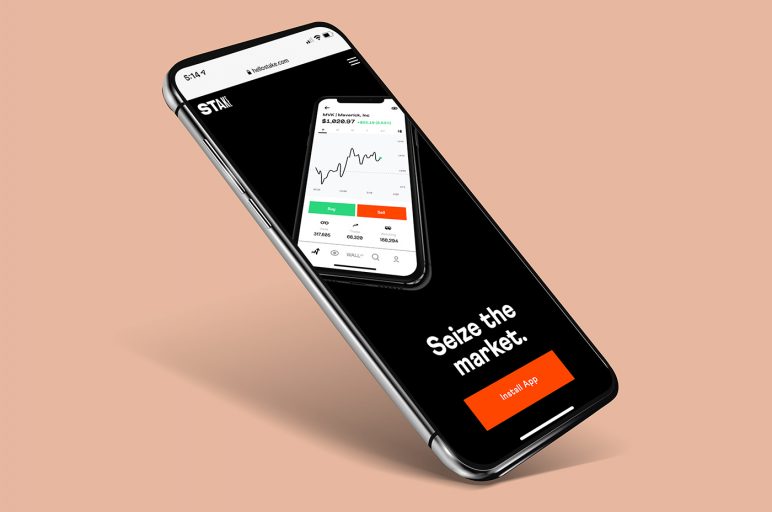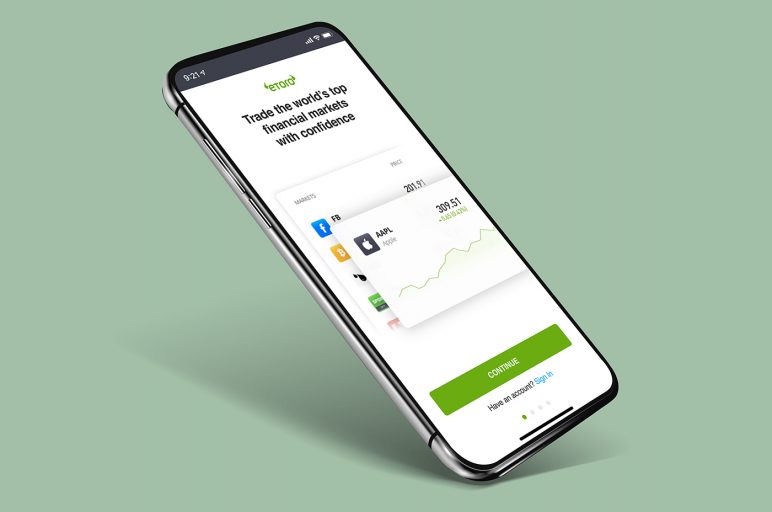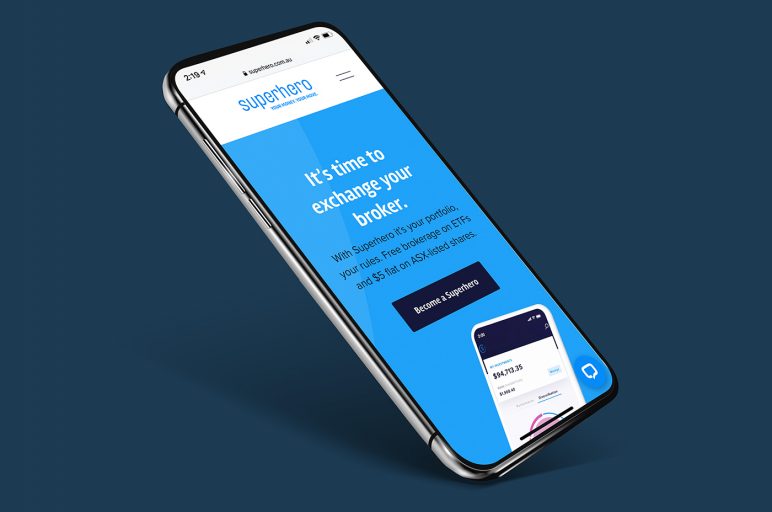Sharesies is a New Zealand stockbroker and micro-investing app, that provides users (in both Australia and New Zealand) access to NZ, AU and US sharemarkets.
- What is Sharesies?
- What are Sharesies’ fees?
- How does Sharesies make money?
- Is Sharesies safe?
- Can you make money from investing small amounts?
- Sharsies vs. other investment platforms
What is Sharesies?
Sharesies launched in New Zealand in 2016 and is a trading platform that can be used by anyone over the age of 18 in Australia. Sharesies has expanded from the New Zealand Stock Exchange (NZX) to cover the United States and the Australian stock exchange.
Sharesies users have access to investments on the ASX, NZX, Nasdaq, New York Stock Exchange (NYE) and Chicago Board Options Exchange (CBOE).
Being able to invest on all these different exchanges means access to a wide variety of companies, from US tech behemoths like Google, to well-known Australian blue-chips like Commonwealth Bank.
Sharesies offers a membership ‘plan’ pricing structure or a pay as you go fee tier.
What are Sharesies’s fees?
Sharesies is part of the low-brokerage trading apps, made popular by the likes of US platforms like Robinhood and eToro.
However, they have transaction fees and currency conversion fees which we’ve broken down below.
If you chose to trade on Sharesies using the ‘pay as you go’ model you will be charged 1.9% transaction fee up to a cap, transaction fees are capped at:
$5 USD for US shares
$6 AUD for Australian shares
$25 NZD for NZ shares
Other fees include, 2% linked bank transfer fee, capped at $2 AUD for both round-ups and top-ups. There is a 0.6% currency exchange fee alongside other fees that could include: depositary fees, PayID transfer fee, share transfer fee and account closure fees.
Alongside the pay as you go option, users can opt for a $5, $10 or $20 plan. This monthly fee includes a nominated value of transaction fees covered within the pricing plan.
How does Sharesies make money?
There is a transaction fee when you buy or sell some investments and Sharesies makes money from currency conversion.
Some fund providers might pay Sharesies to have their funds on the platform. This is known as a ‘rebate’, which Sharesies may not pass on to customers. Sharesies might also earn interest from the money you have in your Sharesies Wallet.
Is Sharesies safe?
When you buy shares through Sharesies, you do not get direct ownership of them. Instead they are owned by a “Sharesies Nominee” which is a custodian holding the shares on your behalf. This has a number of implications:
- You can only sell your shares via Sharesies, so you’re locked in to their platform.
- You can’t participate in Dividend Reinvestment Plans (DRPs). DRPs are plans offered by some companies, allowing shareholders to automatically reinvest their dividends into buying more shares, with no brokerage costs, and usually at a discounted price. With Sharesies, your dividends are always paid as cash into your wallet.
- It’s unclear how Sharesies will handle “corporate actions” on your shares. There’s no guarantee you’ll get the full benefits of being a shareholder like being able to vote on company issues, or participating in rights offers.
Based on historical precedent, it can be riskier to own your investments in an omnibus account rather than on your own individual HIN. As an investor, you need to weigh up the benefits of the lower brokerage with the risk of having your assets mixed up with others.
You need to trust Sharesies (or their custodian) to correctly manage and allocate your investments.
When establishing Stockspot, we made a decision that direct ownership was a much safer way to go for our clients. Instead of having your account mixed up with others, all investments are held legally and beneficially in your own name on your own HIN.
This can cost a little more, but provides benefits. For instance, investors aren’t exposed to counter-party risk. If something ever happened to Stockspot, or one of the external suppliers we work with, it wouldn’t impact your investments because those investments are owned by you and you can simply take them with you.
Find out why direct ownership of your investments is important.
Can you make money from investing small amounts?
Sharesies says you can invest with an amount as low as $0.01.
If buying and selling regularly, investing in small incremental amounts can rack up transactional fees which erode your deposit.
Finally, if you want to transfer your shares to another broker, they may not be able to handle any low-cost fractional shares that you’ve bought on the platform.
Sharesies offers recurring to-up options, to automatically send a pre-determined value to your share wallet or round-ups, where spare change from daily transactions is added to your investment wallet.
How does Sharesies work?
You can create an account with Sharesies on their website in a few minutes and are able to fund your account on the same day. You’ll need to verify your ID in the process.
Once your account has been set up and funded you will be able to buy and sell shares and fractional shares.
If you’re buying US shares, Sharesies will charge an exchange fee when you change Australian dollars into US dollars, and US dollars into Australian dollars. You do this currency conversion in Sharesies before you buy or sell shares, or during the buy or sell process.
Sharesies will have a lot of competition from established share trading apps like Stake and eToro which offer free US share trading. They’ll also be up against Superhero, which offers commission-free trading of exchange-traded funds (ETFs).
Sharesies and eToro compared
Unlike eToro, Sharesies does not allow copy or social trading on the platform and doesn’t allow trades in complex derivatives or leveraged products such as contracts for difference. These can be risky for inexperienced investors.
However, similar to eToro, Sharesies offers fractional shares across all investment options, except for limit orders in US shares. You can even place orders for fractional amounts of NZX shares through auto-invest.
Find out essential facts about eToro.
Sharesies and Robinhood compared
Robinhood only provides access to the U.S. market (both shares and ETFs) but also allows investors to trade in derivatives such as options. Sharesies does not facilitate complex derivative strategies, but like Robinhood, allows users to buy fractional shares.
Unlike Sharesies, who charge a fee when you trade, Robinhood offers free trading in the U.S. but makes most of its money from selling order flow and receiving compensation for directing orders to different parties for executing a trade.
Robinhood also earns money from margin lending. Margin lending means an investor can borrow money from Robinhood to buy stocks. Robinhood is not available in Australia.
Sharesies and Stake compared
Sharesies charge transaction fees on each trade. They offer trading of Australian, New Zealand, and US shares and ETFs.
In comparison, Stake offers trading of U.S. listed shares and as well as on the ASX (but not the New Zealand Stock Exchange) Stake charges $3 brokerage per trade and a FX fee of 0.55% when you convert to or from USD. Unlike Sharesie, Stake allows users to trade with a CHESS-sponsored model, with shares held in a user’s own HIN, for this reason only whole shares are supported.
Find out more about direct ownership of your investments.
Sharesies and Superhero compared
Sharesies charges transaction fees on each trade.
Superhero offers trading of Australian shares with brokerage starting at $2 per trade.
Similar to Sharesies, investments with Superhero are held on an omnibus account with others, which means that they trade under a single Holder Identification Number. This means your investments are held together in an omnibus (combined account), and Superhero (or their custodian), rather than the ASX, keeps track of who owns what.
Read more about Superhero.
Sharesies and SelfWealth compared
Sharesies charges transaction fees on each trade.
SelfWealth offers trading of Australian shares with a brokerage cost of AUD$9.50. SelfWealth also offer trading of US Shares with brokerage costs of USD$9.50 and Hong Kong markets for HKD$88 per trade. With SelfWealth, your investments are held directly in your name on your own individual HIN. This is unlike Sharesies which adopts an indirect custodianship model that we’ve outlined in other sections.
Sharesies and Stockspot compared
The main difference between Stockspot and Sharesies is that Stockspot provides investment advice and an ongoing portfolio management service. With Stockspot, your personal situation is reviewed, and then you receive a recommendation for the best-suited investment strategy based on your goals and investment time horizon.
With Stockspot, once you settle on your investment strategy, you receive a properly diversified portfolio (including Australian shares, global shares, emerging markets, bonds and gold). Stockspot reviews the investment on an ongoing basis and will rebalance your portfolio when necessary.
When you invest with Sharesies, you’ll only get shares and there won’t be any defensive assets in your portfolio, unless you buy them separately. Having proper diversification over different platforms can get tricky and expensive.
With Sharesies you need to pick all of the investments yourself and review them yourself. Some people enjoy monitoring their investments but it can become time consuming.
If your aim is to regularly buy and sell investments to try and make short term profits, this might be your preferred strategy. But, if you’re a long-term investor, your portfolio should be regularly reviewed and rebalanced in line with market movements.
For some people, managing their own investments can be a rewarding hobby. But studies have shown that correct investment selection, the right portfolio allocation, and automatic rebalancing can add over 2% p.a. in pre-tax performance each year. Stockspot does all of this for you.
You can see how the Stockspot portfolios have performed here.
For families looking for low-cost investing for kids, Stockspot allows kids to invest for free up to $10,000 (or until age 18), which helps returns compound without being eroded by fees. As you grow your primary account balance, this fee free limit also increases, Stockspots full fees and pricing tiers can be found here.
For investors, Stockspot offers low cost investing options with management starting at just $1 per month for portfolios under $20,000, making it an affordable alternative to brokerage platforms with the added service benefits of investing through an automated and advised platform.
For investors with balances $20,000 to $199,999 Stockspot charge 0.66% p.a., while balances $200,000 to $1,999,999 would be charged 0.528% and clients with a balance over $2,000,000 would incur an annual management fee of 0.396%.
On top of this, Stockspot is not just a brokerage or a pooled fund; it provides a fully managed investment portfolio, including automated diversification, rebalancing, and professional strategy, all held in your own name.
Stockspot’s full fees and pricing tiers can be found here.




